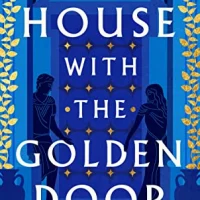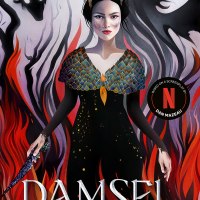Review: The Empire’s Ruin by Brian Staveley
I received a review copy from the publisher. This does not affect the contents of my review and all opinions are my own.
 The Empire’s Ruin by Brian Staveley
The Empire’s Ruin by Brian Staveley
Mogsy’s Rating: 4 of 5 stars
Genre: Fantasy
Series: Book 1 of Ashes of the Unhewn Throne
Publisher: Hardcover: Tor Books | Audiobook: Brilliance Audio (July 6, 2021)
Length: 752 pages | 35 hrs and 33 mins
Author Information: Website | Twitter
Narrators (Audiobook): Moira Quirk, Joe Jameson, Oliver Cudbill
The Empire’s Ruin is epic in every sense of the word—epic in scope, epic in ambition, epic in its delivery. But if you’re familiar with Brian Staveley’s other works in The Chronicle of the Unhewn Throne universe, this should come as no surprise. It has been more than four years since his last novel, the standalone Skullsworn, but clearly he has lost nothing of his craft as he returns to the Annurian Empire with a furiously bold and inexorable new tale.
As the opening volume of a new trilogy called Ashes of the Unhewn Throne, this novel begins a new adventure in a world on the brink of ruin following the decimation of the Kettral and the fact that the kenta gates, long used by emperors to instantly travel to any point in their vast empire, are now defunct. Of course, reading the previous trilogy is highly recommended before tackling this one, but it is not completely necessary; Staveley does a bang-up job rehashing the details of past events you need to know, and newcomers will not miss a beat. A handful of years have passed since the end of The Last Moral Bond, and the story now shifts to a new group of POV characters, though longtime fans may recognize a couple names. First, we have Gwenna Sharpe, our favorite Kettral—a member of the emperor’s elite warriors, named for the giant war birds they ride into battle. Faced with their dwindling ranks, Gwenna sets out on a journey to the faraway land of Menkiddoc in search of their fabled kettral nesting grounds, tasked to bring back new eggs.
Meanwhile, in the swamp city of Dombâng, a young priest named Ruc tries hard to forget his blood-soaked past as he dedicates his new life to Eira, the goddess of love. But Dombâng is now a city freed from the yoke of the Annurian Empire, and worship of the local deities have resurfaced. Residents conduct violent practices such as human sacrifices in the name of the Three, making it a dangerous situation for Ruc who is in a constant battle to resist an overwhelming instinct threatening to pull him back into the darkness. His fellow priest, friend, sometimes lover Bien helps to keep him in the light, but she also has her own secrets. As the dangers close in, the two of them must find a way to escape. And then there is Akiil, a monk-turned-grifter who uses his past connection with the emperor’s brother to ingratiate himself into her court. As the last surviving Shin monk, he may have the information Adare needs to unlock the secrets of the kenta gates, which would the use of them again.
Of the three perspectives, there was definitely one that outshone the others. If there was a main character, it would be Gwenna, who storyline easily dominated this novel, both in breadth and interest. Of course, she had the advantage of being a standout already from the previous trilogy, but if you are meeting her for the first time, I think you’d agree too—she’s a force to be reckoned with! Of all the characters in the supporting cast of Staveley’s novels, I’m glad he brought her back to have a starring role in a new series. I think fans both new and old will find her storyline to be the most fascinating and gripping. The runner-up would probably be Ruc, whose origins in the swamps and his subsequent misadventure in the ever changing social and religious landscape of Dombâng made for compelling character development. From the brackish waters of the delta to the harrowing life-or-death struggles in the arena, there was never a shortage of grit in Ruc’s chapters.
So that leaves Akiil. To be fair, there were some inherent reasons why his chapters might have been the weakest, which had nothing to do with the writing or storytelling. For one, his character’s role in this novel was relatively minor, and his time on the page was also the shortest. While there may be more planned for him later in the series, for now it appears his storyline is in the process of being established, and so we don’t get as much activity compared to the other two POV threads. That would be one of my criticisms, and there were a few other hiccups, including pacing issues cropping up here or there as momentum ebbed and flowed with the different character perspectives. However, in some ways that is to be expected with a novel of this size, and I think epic fantasy readers will know to roll with the punches.
All in all, I enjoyed my return to the world of The Chronicle of the Unhewn Throne, and with this introduction to a new series, we also got to see more of the universe. For me, it was a perfect mix of the new and the old, and the addition of more exciting action and magic on top of a solid foundation. Brian Staveley has come a long way since The Emperor’s Blade, and his talent and reputation as a fantasy genre powerhouse has only grown with every novel since his debut. Reading his books is always a pleasure, and The Empire’s Ruin was definitely worth the wait.
![]()
![]()












wow 35 hours? I’m impressed, that’s a lot!
LikeLike
Yes, it’s quite a doorstopper!
LikeLike
I have only listened to a couple of epic fantasy tales – and I agree with you, it’s a great way to access a doorstopper. I’ll bear this one in mind – thank you for an enjoyable, informative review, Mogsy:).
LikeLike
Yep, I find it less mentally draining after a long book if I do it in audio 🙂
LikeLiked by 1 person
I completely agree:))
LikeLike
I haven’t read the first series so I won’t be tackling this, but one day I hope to check out Staveley😁
LikeLike
You don’t have to read the first trilogy to read this one, but I can understand why you would want to! And honestly, it’s worth checking out! 😀
LikeLike
My thoughts echo Tammy’s. I won’t be tackling this anytime soon, but I do think it’s a world I would enjoy exploring one day, starting with the first series.
LikeLike
Yes, I can understand wanting to start at the beginning, I’m the same way 🙂 And like I told Tammy as well, the first trilogy is awesome, totally worth reading!
LikeLike
Pingback: Bookshelf Roundup: 07/31/21: Stacking the Shelves & Recent Reads | The BiblioSanctum
Pingback: Bookshelf Roundup: 07/31/21: Stacking the Shelves & Recent Reads – Book Library
Yes, I want it!
LikeLike
I am enjoying this – it’s taking me some time but I love the writing and characters.
Lynn 😀
LikeLike